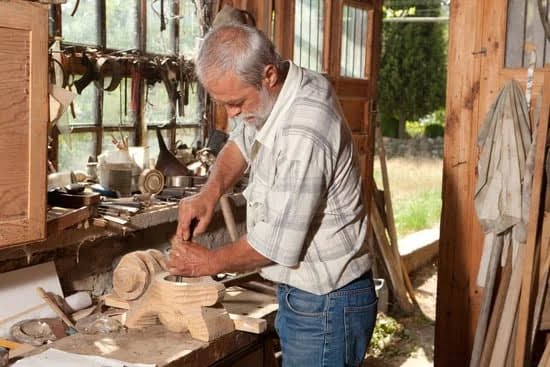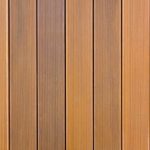Looking to enhance your woodworking skills and create a beautiful and functional piece for your home? In this article, we will explore how to make a table for woodworking, providing you with the knowledge and guidance to tackle this rewarding project. Whether you’re a beginner or an experienced woodworker, crafting your own table can be a fulfilling endeavor that allows you to showcase your creativity and craftsmanship.
Tables are essential in woodworking, serving as both practical and decorative elements in any space. From dining tables to coffee tables, they provide a surface for various activities while also adding aesthetic value to a room.
Creating your own table allows you to customize it to meet your specific needs and style preferences, making it a truly unique addition to your home. The satisfaction of seeing a finished table that you’ve designed and built with your own hands is unmatched, making this project an exciting prospect for any woodworking enthusiast.
In the following sections, we will guide you through each step of the table making process – from choosing the right wood and tools needed, to designing, planning, and executing the assembly process. We’ll also delve into joinery techniques and finishing touches that will elevate the overall quality of your creation. By the end of this article, you’ll be equipped with the knowledge and confidence to embark on your own table making journey. So let’s get started.
Choosing the Right Wood
Wood is a crucial element in table making, and choosing the right type of wood is essential to ensure the table’s durability and overall aesthetic. When considering how to make a table for woodworking, it’s important to understand the different types of wood available and their characteristics. Here are some popular options to consider:
- Oak: Known for its strength and durability, oak is a popular choice for table making. It has a beautiful grain pattern and can be finished in various ways to achieve different looks.
- Maple: Maple is another strong and durable wood that is often used for tabletops. It has a smooth texture and can be stained or painted to match different styles.
- Walnut: Walnut is prized for its rich, dark color and beautiful grain pattern. It’s a bit softer than oak or maple but still provides excellent durability.
Aside from these popular options, there are many other types of wood that can be suitable for table making, each with its own unique characteristics in terms of color, grain pattern, hardness, and workability.
When choosing the right wood for your woodworking project, consider factors such as the intended use of the table, the overall design aesthetic you’re going for, and your skill level with working different types of wood.
Ultimately, selecting the right type of wood will play a significant role in determining the final look and feel of your handmade table. So take your time to explore different options and choose the one that best suits your project requirements and personal preferences.
Tools Needed
When it comes to woodworking, having the right tools is essential for creating a successful and durable table. Whether you are a beginner or an experienced woodworker, having the right tools can make all the difference in the quality of the final product. Here is a list of essential woodworking tools needed to make a table:
Measuring Tools
Accurate measurements are crucial when making a table. Some essential measuring tools include a tape measure, combination square, and marking gauge. These tools will help ensure that your table is properly sized and aligned.
Cutting Tools
Cutting is a fundamental part of woodworking, and having the right cutting tools is crucial for making a table. A table saw, circular saw, jigsaw, and handsaw are essential for cutting wood to the correct dimensions and shapes.
Joinery Tools
Joinery is what holds the various components of the table together. Essential joinery tools include chisels, hand planes, and a wood router. These tools will allow you to create precise and strong joints for your table.
Sanding Tools
Once the table has been assembled, sanding is necessary to smooth out any rough edges and surfaces. Sanding blocks, orbital sanders, and sandpaper of different grits are essential for achieving a professional finish on your table.
These essential woodworking tools are necessary for anyone looking to make their own table. Investing in high-quality tools will not only make the process easier but also ensure that your finished product is of high quality and built to last.
Design and Planning
When it comes to woodworking, design and planning are essential steps in creating a beautiful and functional table. Whether you’re a beginner or an experienced woodworker, taking the time to carefully plan and design your table will result in a finished product that you can be proud of. Here are some tips on how to create a design and a detailed plan for your table, including measurements and sketches:
- Determine the purpose of the table: Before you start designing, consider the purpose of the table. Is it meant for dining, working, or decorative purposes? The function of the table will influence its size, shape, and overall design.
- Take accurate measurements: Measure the space where the table will be placed to ensure that it fits perfectly. Consider the height and width of chairs if it’s a dining or work table. Accuracy is crucial in this step to avoid any fitting issues later on.
- Create sketches and mock-ups: Use graph paper or design software to create rough sketches and mock-ups of your table design. This will help you visualize the final product and make any necessary adjustments before starting construction.
Once you have a clear idea of your table’s design and have all the necessary measurements down, you’ll be ready to move on to the next steps in making your own woodworking masterpiece.
Remember that careful planning will save you time during the construction process and result in a more refined final product. This is just one part of learning how to make a table for woodworking, but it’s crucial for setting yourself up for success from start to finish. With these tips in mind, you’ll be well-prepared for moving onto joining techniques like mortise and tenon joinery as well as assembling your beautifully designed project.
Joinery Techniques
When it comes to woodworking, the joinery techniques used can make a significant difference in the strength and aesthetic appeal of the final product. For those looking to make their own table, understanding different joinery methods is essential.
Mortise and tenon, dovetail, and pocket hole joinery are among the most popular techniques used by woodworkers. Each method has its own advantages and challenges, so it’s important to choose the right one based on the specific requirements of your table project.
Mortise and tenon joints are known for their strength and durability. This traditional woodworking joint involves creating a mortise (hole) in one piece of wood that perfectly fits the tenon (protruding tongue) of another piece. This technique requires precision cutting and fitting but produces a long-lasting bond that can support heavy loads, making it ideal for table legs or framing.
On the other hand, dovetail joints are prized for their resistance to being pulled apart, making them suitable for connecting table drawers or other parts that require additional strength. The unique interlocking shape of dovetails prevents the joint from coming apart under stress, adding an attractive decorative element to the table.
For those seeking a more straightforward and efficient option, pocket hole joinery may be the way to go. This technique involves drilling an angled hole into one piece of wood and then joining it to another with a specialized screw. While not as visually appealing as other methods, pocket hole joints are quick to create and provide reliable strength, making them suitable for assembling tabletops or other less visible areas of the table.
In summary, understanding how to make a table for woodworking includes selecting suitable joinery techniques based on your design preferences and construction needs. Whether aiming for traditional craftsmanship with mortise and tenon joints or seeking efficiency with pocket hole joinery, choosing the right option can elevate your woodworking skills while ensuring a sturdy and well-crafted table.
| Joinery Technique | Advantages |
|---|---|
| Mortise and Tenon | Strength, durability |
| Dovetail | Resistance to being pulled apart, decorative appeal |
| Pocket Hole Joinery | Efficiency, reliable strength |
The Assembly Process
The first step in the assembly process is cutting the wood to the correct size and shape according to the design and plan created in the previous stage. This requires precision and accuracy to ensure that all pieces fit together seamlessly. It is important to use reliable measuring tools such as a tape measure, square, and marking gauge to guarantee the right dimensions.
Shaping the Wood:
Once the wood has been cut to size, shaping may be required to create intricate details or smooth edges. This can be done using a variety of tools such as chisels, hand planes, and rasps. Each component should be carefully shaped according to the design specifications while paying attention to detail for a professional finish.
Sanding:
After cutting and shaping, sanding is essential to achieve a smooth and polished surface on all parts of the table. The type of sandpaper used will depend on whether rough shaping or fine finishing is required. Sanding not only enhances the visual appeal of the table but also prepares the surface for applying any chosen finish such as varnish or paint.
By following these steps carefully and precisely, you can ensure that your woodworking project comes together successfully during the assembly process. Patience and attention to detail are key in creating a high-quality table that will be both functional and visually appealing.
| Assembly Process Stage | Description |
|---|---|
| Cutting | The first step involves cutting the wood according to design specifications using precise measuring tools. |
| Shaping | Once cut, shaping may be required using various hand tools such as chisels and planes. |
| Sanding | Finally, sanding ensures a smooth and polished finish before applying any chosen finishes. |
Finishing Touches
When it comes to finishing a woodworking project, the options are endless. The final touches you put on your table can truly make or break the overall look and feel of the piece. In this section, we will discuss different finishing options such as staining, varnishing, or painting the table, as well as the importance of achieving a smooth, polished surface.
Staining
Staining is a popular choice for finishing wooden tables because it allows the natural beauty of the wood to shine through while adding color and depth. Before staining, it’s important to sand the wood thoroughly to ensure an even finish.
There are many different types and colors of wood stain available, so take your time in choosing the perfect shade for your table. Apply the stain with a brush or cloth in long, even strokes and allow it to dry completely before adding additional coats if needed.
Varnishing
Varnishing is another great option for finishing a woodworking project. Varnish provides durable protection against moisture and wear and tear while enhancing the natural grain of the wood. When applying varnish, make sure to use long strokes with a high-quality brush and apply multiple thin coats for best results. Between coats, lightly sand the surface to achieve a smooth finish.
Painting
For those looking for a more colorful or unique finish, painting is always an option. When painting a wooden table, be sure to use a high-quality primer and paint specially formulated for wood surfaces. Take your time with this process and apply multiple thin coats of paint for an even finish. Once dry, you can add decorative touches such as distressing or stenciling to personalize your table.
Final Thoughts
In conclusion, the art of woodworking and creating your own table can be incredibly fulfilling and rewarding. From choosing the right wood to mastering essential tools and joinery techniques, the process of making a table requires patience, precision, and determination. However, the end result is not only a functional piece of furniture but also a beautiful work of art that you can proudly display in your home.
When it comes to making a table for woodworking, it’s important to remember that each step is an opportunity to learn and grow as a woodworker. Whether you’re a beginner or experienced craftsman, the process of designing, planning, and assembling a table provides endless possibilities for creativity and imagination. The satisfaction of watching your vision come to life as you shape and refine each piece of wood is truly incomparable.
As you embark on your woodworking journey and explore how to make a table for woodworking, don’t be afraid to experiment with different designs, joinery techniques, and finishing options. Take the time to enjoy every step of the process and embrace any challenges that may arise along the way.
With dedication and passion, you’ll soon find yourself not only creating stunning tables but also honing your skills as a woodworker. So go ahead, gather the necessary tools and materials, plan out your design, and start building – you may just discover a new lifelong passion.
Frequently Asked Questions
How Do You Make a Simple Wood Table?
Making a simple wood table requires a few key steps. First, you’ll need to measure and cut the wood to create the tabletop and legs. Then, assemble the table using screws or wood glue. Finally, sand down any rough edges and finish the table with paint or stain for a polished look.
Is It Cheaper to Build a Workbench or Buy One?
Whether it’s cheaper to build or buy a workbench depends on various factors such as the quality of materials, tools needed, and your own skills. In some cases, building a workbench from scratch can be more cost-effective, especially if you already have some of the necessary materials and tools on hand.
What Lumber to Be Used in Making a Table?
When making a table, it’s important to use lumber that is sturdy and durable. Hardwoods like oak, maple, cherry, or walnut are popular choices for tabletops due to their strength and attractive grain patterns.
For the table legs and frame, softwoods like pine or cedar can be used for a more cost-effective option. Ultimately, the type of lumber you choose will depend on your budget, aesthetic preference, and intended use for the table.

Hi everyone! I’m a woodworker and blogger, and this is my woodworking blog. In my blog, I share tips and tricks for woodworkers of all skill levels, as well as project ideas that you can try yourself.





